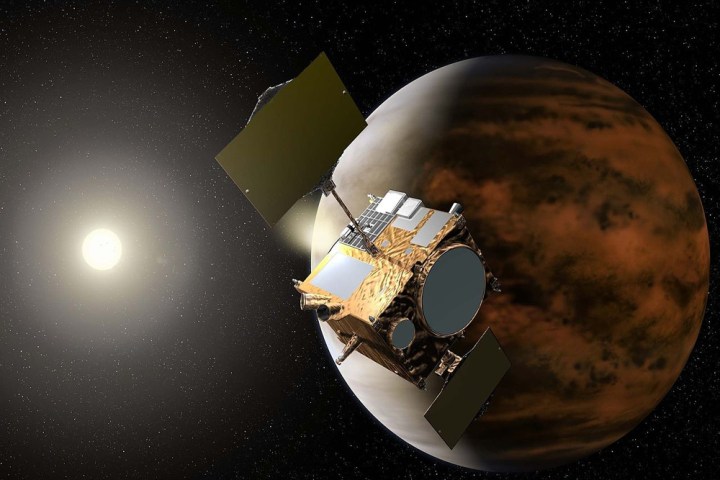
During Akatsuki’s 2010 attempt, instead of positioning itself to fly into Venus’s elliptical equatorial orbit, the spacecraft’s malfunctioning engine’s prevented it from properly braking. Falling fuel pressure and a decrease in thrust improperly positioned the craft and before long, Akatsuki’s on-board fault protection shut the engine down to prevent complete failure. Once this happened, the probe flew right past Venus without catching the orbit.

To make matters worse, Akatsuki was completely covered by Venus during its engine burn meaning communication was non-existent with Earth during the attempt. Because of this, JAXA was unable to see exactly what happened until reading the probe’s recorded telemetry data after it had a go at entering the orbit of Venus. Lucky for the team behind Akatsuki, it became apparent a rare second chance would avail itself in the future; unfortunately, this second chance was five years away.
Opportunistic and hopeful, JAXA patiently waited five years for its second crack at Venus and, triumphantly, the agency prevailed. By making use of a set of small thrusters aboard the Akatsuki, engineers were able to slightly alter the probe’s trajectory so it could be pulled in by the gravity of Venus. Though the new orbit of the craft is slightly off what JAXA originally intended, the crew couldn’t help but get excited at Akatsuki’s renewed mission.
“We had a perfect operation,” exclaimed Masato Nakamura, JAXA’s project manager. “We have to wait another two days to confirm the orbit. I am very optimistic. It is important to believe in success!”
Now that it can examine Venus as it originally intended, JAXA intends to study the planet’s atmosphere while Akatsuki orbits at speeds of up to 186 miles per hour. They say patience is a virtue, but in the case of JAXA and its revitalized Akatsuki spacecraft, patience was absolutely essential.
Editors' Recommendations
- SpaceX Crew-6 splash down after 6 months in orbit
- Challenger space shuttle fragment found 36 years after disaster
- Check out Pirs’ fiery end after 20 years at the space station
- Parker Solar Probe detects a natural radio signal coming from Venus
- The first module of a new space station has just entered Earth’s orbit


